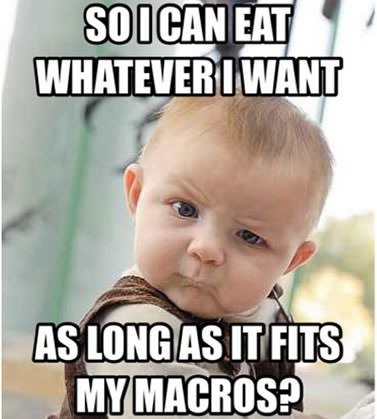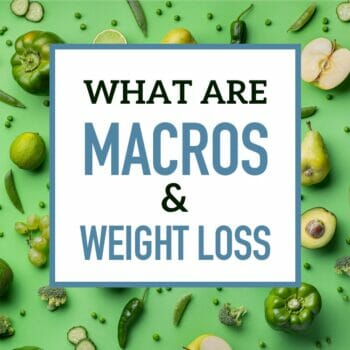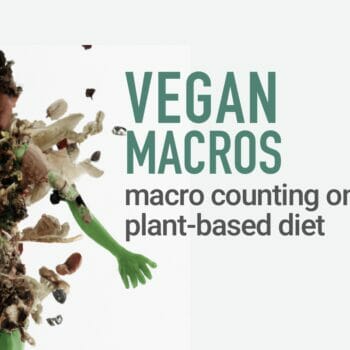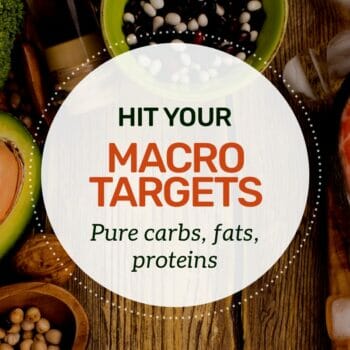What is Flexible Dieting? A Macro Based Diet Plan to Get Started Quickly
Flexible dieting is a method of eating that places no restrictions on food groups.
My diet experience led me to believe some foods are good and some are bad for you.
How you lost weight depended on the foods you cut out of your diet.
Traditional thinking:
- Chicken + Rice = Good.
- Ice Cream + Lollies = Bad.
A macro-based flexible dieting plan
Flexible dieting (also known as If It Fits Your Macros or counting macros) is the counting and tracking of macronutrients (protein, carbohydrates, and fat) to achieve a body composition goal.
Any foods can be eaten – provided you keep within your macro targets.
Start a flexible diet plan like this:
- Calculate your TDEE (total daily energy expenditure) based on your current weight and exercise.
- Calculate your macros in ratios that help you reach your desired goal.
- Track your food intake and try to meet your daily TDEE and macro limits.
There are three main macros: protein, fat, and carbohydrate.
One gram of each macro has a calorie value.
- 1 gram of protein = 4 Calories
- 1 gram of carbohydrate = 4 Calories
- 1 gram of fat = 9 Calories
Rather than fixed calorie counting (e.g., eating 2000 calories a day), flexible dieting tracks macronutrients.
Those 2000 calories may comprise 150 g protein, 80 g fat, and 170 g carbohydrate.
This mix of macro-nutrients influences body composition, fuels workouts, and manages hunger.
What does it mean to be flexible?
Flexible dieting is based on the idea that there are no miracle weight loss foods.
A flexible approach means no “good” or “bad” foods – just macro ratios.
Take these two foods. One is traditionally seen as “bad,” and one is “good.”
McGrilled Chicken Burger
- 25g Protein
- 33g Carbohydrate
- 15g Fat
OR
Brown Rice and Tuna
- 25g Protein
- 33g Carbohydrate
- 15g Fat
Both are the same macros and will achieve the same results in your body composition.
When food enters your stomach, your body isn’t thinking, “healthy or unhealthy?”
It is simply breaking down the food and processing the macronutrients.
Flexible dieting allowsyou to eat whatever you want so long as you hit your macro goals.
Fiber: track or not?
I recommend tracking your fiber intake to improve your health (although not necessary to change your body).
This will ensure that you are getting enough micronutrients as well. For overall better health, 80-85% of your diet should come from nutritious whole foods.

Why I continue using a flexible dieting approach
I’ve experimented with a wide range of different diets.
All of them have merits, but flexible dieting is my favorite (and one I continue to follow today).
Here’s why:
1. Flexible dieting gives better results
The basis of all weight loss is this: A calorie deficit is necessary for losing weight.
Quality is important, but quantity is the determining factor in weight loss or gain. If you’re not in a calorie deficit, you can eat all the “good foods” you want and go nowhere.
Flexible dieting means tracking everything that enters your mouth.
This stops the guesswork and takes control over how & when you reach your goals. The most effective way to change your body is by tracking macros or calories.
A 2021 study compared the flexible diet to stricter diets, and the participants lost the same amount of weight with both approaches.
There was no benefit to a stricter approach! In addition, the flexible dieters ended up with more lean muscle mass.
Why all the sacrifice if you don’t have to?
2. Freedom from restriction
Flexible dieting is just that: Flexible.
One of the challenges with dieting is the awkward social element.
You can only bring Tupperware containers full of rice and chicken to so many dinners before you feel like a real jerk.
Research shows a more flexible approach leads to less anxiety and more successful weight management.
You can join in on meals with families and friends, so long as you track what you’re eating.
3. Sustainable and lifelong, rather than yo-yo
For years my cycle would look the same. I’d set myself a super restrictive way of eating and then “diet, diet, diet, binge… diet, diet, diet, binge”.
I had such an unhealthy view of eating, and I never really stuck to anything long enough to get results.
I didn’t realize that food is not just physical. It’s also psychological.
Flexible dieting is the first thing I’ve been able to stick to over a long period. It seems to kill the “diet, binge” cycle many of us have found ourselves on.
Because you can eat whatever you want (in moderation), it’s mentally and emotionally sustainable.
Flexible dieting in four steps
1. Calculate your macros
If you are a do-it-yourself person, my macro solution program covers everything.
2. Count Your Macros
This way of eating is all about tracking and measuring your macro intake.
My Food Diary is an excellent app for beginners. For more advanced users, MyFitnessPal or MyMacros+ is an option. See the best macro-tracking apps.
3. Buy a Food Scale
Although food packaging contains a lot of nutritional information, a scale can guarantee that you precisely track what you consume.
4. Track your progress
Don’t just rely on the scale to track your progress as your weight can fluctuate for many reasons.
Track your progress using multiple data points.
- The scale
Weigh yourself at the same time of day after you’ve used the bathroom. - Body fat percentage
Calculate how much fat and lean mass you have and how this changes over time. - Body measurements
Measure various parts of your body, especially the places in which you tend to store fat. - Photos
Take pictures throughout the process. Wear the same clothes and stand in the same spot.
Sources
- Smith, C. F., Williamson, D. A., Bray, G. A., & Ryan, D. H. (1999). Flexible vs. Rigid dieting strategies: relationship with adverse behavioral outcomes. Appetite, 32(3), 295-305.
- Conlin, L.A., Aguilar, D.T., Rogers, G.E. et al. Flexible vs. rigid dieting in resistance-trained individuals seeking to optimize their physiques: A randomized controlled trial. J Int Soc Sports Nutr 18, 52 (2021).


 How to track macros with Cronometer
How to track macros with Cronometer What Are The Best Macros For Weight Loss?
What Are The Best Macros For Weight Loss? How To Count Macros on a Vegan, Vegetarian, or Plant-Based Diet
How To Count Macros on a Vegan, Vegetarian, or Plant-Based Diet Out of a Macro For the Day? Here’s What to Eat
Out of a Macro For the Day? Here’s What to Eat Macros for Gaining Muscle and Cutting Fat
Macros for Gaining Muscle and Cutting Fat